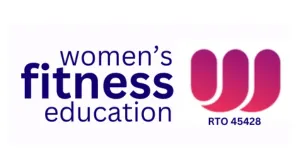Women's Fitness Blog

Protecting Your Most Important Tool: Voice Care for Fitness Professionals
When was the last time you thought about your voice? As fitness professionals, we focus on the body—strength, mobility, endurance—but we rarely stop to consider the toll our profession can take on our voices. Whether you're shouting across a boot camp, teaching dance classes with blaring music, or giving back-to-back sessions, your voice is your most important tool. Yet, it’s often overlooked until there’s a problem.
In a conversation with Rachel Pietsch, a voice coach specialising in voice function, we explored the mechanics of the voice, common issues faced by professionals who rely on their voices, and practical tips for keeping your voice strong and healthy.
The Mechanics of the Voice: More Than Just Sound
Rachel describes herself as a "personal sound engineer" or "voice stylist," and her expertise lies in the mechanics of how we produce sound. Vocal cords, posture, breathing, and airflow all play a role in how we use our voices. Strengthening and caring for these elements can mean the difference between a career-long healthy voice and chronic issues like strain, hoarseness, or even vocal cord damage.
She notes that professions like teaching (and fitness instruction is, in many ways, teaching) rank among the highest for vocal strain. Many instructors are thrown into the deep end without ever learning how to use their voices properly. Over time, this can lead to fatigue, huskiness, or even more serious problems like nodules.
Warning Signs of Vocal Damage
If you rely on your voice professionally, it’s important to recognise early warning signs of vocal strain. According to Rachel, these include:
Persistent hoarseness or changes in your voice lasting more than two weeks.
A sore throat or the need to clear your throat frequently.
Feeling tired or losing energy in your voice during classes.
Difficulty projecting or maintaining a consistent tone.
If you notice any of these signs, it’s worth consulting an ear, nose, and throat specialist (ENT). They can perform detailed assessments, such as a stroboscopy, to evaluate your vocal cords and check for potential issues like nodules.
Strengthening and Protecting Your Voice
The good news? Just like you can strengthen your muscles, you can strengthen your vocal cords. Rachel recommends starting with simple exercises like humming. “Humming is a great way to isolate your vocal cords and get them working without overusing other muscles,” she says. Here’s a basic progression:
Begin with a clean, gentle hum: “Mmm.”
Ensure it’s not breathy or strained—your vocal cords should come together cleanly.
Gradually increase the intensity and volume over time, just as you would with physical training.
Breath control is another critical factor. Diaphragmatic breathing—where you expand your belly, back, and sides as you inhale—is essential for proper vocal support. Rachel suggests placing your hand on the fleshy area between your belly button and sternum while breathing in through your nose. You should feel that area expand, along with your sides and back.
Avoiding Vocal Trauma in Loud Environments
Fitness instructors often teach in challenging environments, from outdoor boot camps to dance classes with loud music. Without proper amplification, many rely on yelling or straining their voices to be heard. Rachel cautions against this, emphasising that projection is not about volume—it’s about sending your sound out naturally.
Here are Rachel’s top tips for voice projection:
Start with diaphragmatic breathing to support your voice.
Release tension in your neck and throat—your voice shouldn’t feel “stuck.”
Use forward placement by imagining your sound travelling out in front of you, not getting caught in your throat.
And don’t forget to warm up! On your way to class, spend a few minutes humming or doing slides to prepare your voice for the work ahead.
Why This Matters for Your Career
Your voice isn’t just a tool; it’s part of your identity as a fitness professional. Protecting it ensures you can continue doing what you love without pain or frustration. By investing in voice training and adopting healthy habits, you can extend the life of your voice and prevent long-term damage.
At Women’s Fitness Education (WFE), we’re thrilled to have Rachel sharing her expertise in a special training session for our students. Whether you’re teaching a high-energy Zumba class or leading calming Pilates sessions, understanding how to care for your voice is a game-changer.
Final Thoughts
Our voices are powerful, yet delicate. They convey energy, motivation, and connection in every class or session we lead. By understanding the mechanics of voice function and adopting practices to protect it, we can safeguard this vital tool for years to come.
Want to learn more? Tune in to our latest podcast episode, where I chat with Rachel Pietsch about voice care, projection, and practical tips for fitness professionals. Click here to listen.
Let’s start treating our voices with the same respect we give our bodies—because they deserve it.
You may be also interested in these blogs
Inclusive Fitness with Scott Hunt
A Holistic Approach to Women’s Health with Dietitian Gia Stewart
Regaining Strength and Confidence with Pearl Lee from Dragons Abreast

